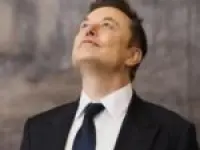
Hayao Miyazaki vs AI: The Battle For The Heart Of Studio Ghibli Animation
In recent weeks, the rise of AI-generated art has taken social media by storm, especially with the advent of OpenAI’s “most advanced image generator yet” through the GPt-40 model.
People across the globe have been using this innovative tool to create images inspired by the distinctive visual style of Studio Ghibli, particularly the iconic works of legendary Japanese animator Hayao Miyazaki.
This wave of AI-generated Ghibli-style art has gained massive popularity, flooding social platforms like X and Instagram with images that capture the whimsical, colorful, and dream-like aesthetics synonymous with Studio Ghibli films.
Also, read| Elon Musk Joins Studio Ghibli-Inspired Trend On Social Media With A Twist
However, not everyone is celebrating this new wave of digital artistry. Among the critics is none other than Miyazaki himself, who has long been a staunch defender of traditional animation methods and a vocal opponent of AI-generated art.
In the past few months, AI-generated art has been gaining momentum, particularly after the release of GPT-4o’s new image-generation features.
This tool has allowed both paid and free-tier users to produce stunning visuals that mimic the intricate style of Studio Ghibli’s iconic films.
In particular, many have used the platform to create Ghibli-style portraits of themselves, friends, and even celebrities, posting their results on platforms like Instagram and X. These images have quickly gone viral, with Ghibli-style art becoming a popular theme across digital art communities.
One of the biggest points of contention is the question of originality and authorship. AI tools like GPT-4o can generate visually stunning pieces, but many argue that they lack the soul and intentionality of human-created art.
Co-founder of Studio Ghibli, Hayao Miyazaki’s reaction to AI-generated art btw https://t.co/w9xHfyLVrG pic.twitter.com/EtPkmsgtZt
— kp (@earthlykisssed) March 26, 2025
For those who view art as a deeply personal and human endeavor, the rise of AI-generated works feels like a threat to the integrity of the creative process.
Hayao Miyazaki, the mastermind behind Studio Ghibli, has long been an advocate for traditional hand-drawn animation, and his works reflect a dedication to the craftsmanship that goes into every frame.
Born in 1941, Miyazaki began his animation career in the 1960s and co-founded Studio Ghibli in 1985. Since then, he has directed some of the most beloved animated films of all time, such as Spirited Away, My Neighbor Totoro, and Princess Mononoke.
Also, read| “Insult To Life Itself”: Ghibli Founder Hayao Miyazaki Slams AI-Generated Art
Miyazaki’s works are known for their rich hand-drawn animation, where each frame is meticulously crafted, often with a focus on vivid detail, emotional depth, and political themes.
For him, the pencil remains the ultimate tool for animation, and he has expressed a strong belief that computer-generated art lacks the human touch that is essential to creating meaningful art.
Miyazaki’s feelings on AI-generated art are well-documented. In the 2016 documentary Never-Ending Man: Hayao Miyazaki, Miyazaki was shown a demonstration of an AI-generated animation.
His response was passionate and critical: “I am utterly disgusted… I would never wish to incorporate this technology into my work at all. I strongly feel that this is an insult to life itself.”
Miyazaki’s words reflect his deep concern that AI technology is stripping away the human element from creative works and diminishing the value of human labor in art.
He also expressed a sense of existential dread, feeling that “we humans are losing faith in ourselves” as we turn to machines to create what was once a distinctly human pursuit.
The Studio Ghibli Legacy
Studio Ghibli’s unique aesthetic is the result of years of hard work and dedication to the art of hand-drawn animation.
The studio’s animations are painstakingly hand-painted, with much of the work carried out by skilled artists who put their time and effort into every frame.
This commitment to traditional methods has won Studio Ghibli a loyal global following, with films such as Spirited Away (2001), Howl’s Moving Castle (2004), and The Wind Rises (2013) continuing to captivate audiences worldwide.
Ghibli’s films often blend the ordinary with the fantastical, creating worlds where the everyday is imbued with magic and wonder. At the same time, these films explore profound themes such as pacifism, environmentalism, and the complexity of human nature.
Also, read| “Insult To Life Itself”: Ghibli Founder Hayao Miyazaki Slams AI-Generated Art
Miyazaki’s films also stand out for their nuanced and progressive portrayals of female characters. Unlike many other films, where female characters are often relegated to stereotypical roles, Ghibli’s heroines are strong-willed, independent, and capable of navigating complex challenges without losing their sense of self.
This progressive treatment of women in film is just one of the many ways in which Studio Ghibli has defied the conventions of mainstream cinema.
While tools like GPT-4o make it easier for anyone to create Ghibli-inspired art, there is still a significant difference between AI art and the painstakingly crafted works of human animators like Miyazaki.
The whole Studio Ghibli AI trend honestly gives me second-hand embarrassment knowing how hard Hayao Miyazaki has fought to retain the identity of his films and how many of you are this willing to make a farce out of decades of artistry because you don’t value it https://t.co/TgSxnb1Ah5
— gregor samsung 𖢥 (@slimjosa) March 27, 2025
While AI can replicate styles and generate visually impressive works, some said that it cannot replicate the personal vision, intent, and emotion that goes into each frame of a Ghibli film.
In the meantime, AI-generated Ghibli-style art will likely continue to captivate internet users, but for Miyazaki and Studio Ghibli fans alike, the soul of animation will always be human.










